Having fun with Mirrors and RaytracersWritten by Paul BourkeOctober 1997 Question: What happens inside a room with one light source and perfectly mirrored walls? In what follows the standard geometric arrangement as shown below will be used. A cubic room, one light source to the left of the camera, a red cross made of reflective cylinders, and a blue reflective sphere in the center.
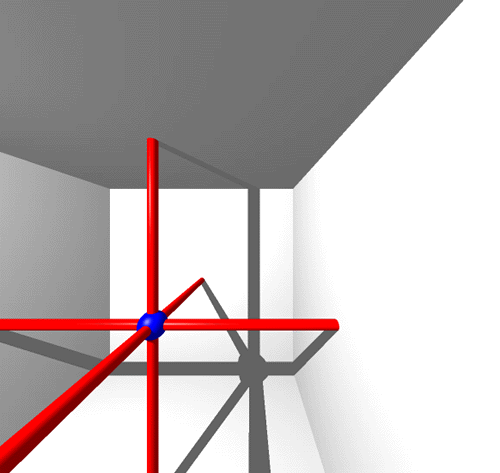 The walls are turned into perfectly reflective surfaces, at least as perfect as the traditional raytracing software (StrataStudio) being used would allow.
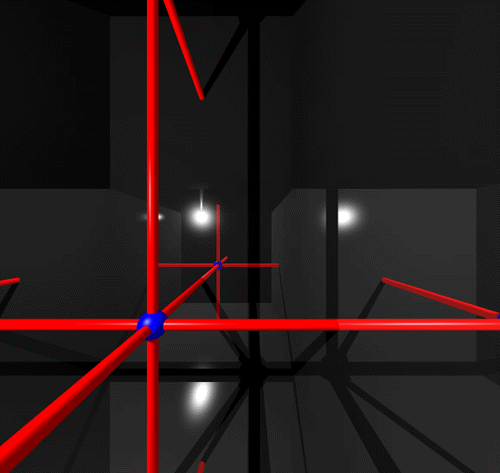 Obviously since there is some loss at the interface the surfaces are not perfect reflectors. The second thing to note when rendering such a scene with highly reflective surfaces is that raytracers don't follow rays "forever". Normally the software stops considering a ray after a certain number of bounces (intersections) with objects. This is perfectly reasonable with common non reflective surfaces but not in this example. Typically, the default number of bounces is only 2 or 3, the previous image is a rendering of the scene with only a few bounces being considered. The effect is that it appears we have an adjacent room at each wall, we should have an infinite progression of virtual rooms! By comparison, consider the same rendering but with a much higher number of bounces, 10 in this case. As expected, such renderings take significantly longer to compute.
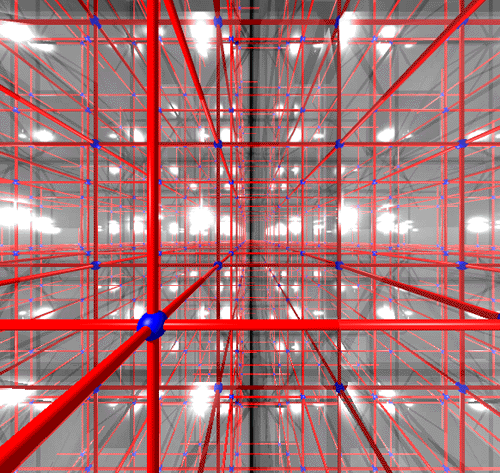 Switching now to software which supports more realistic surface behaviour, namely Radiance. In the next 3 renderings the wall surfaces are varied from shiny metal into a perfect mirror. In all three cases the maximum number of bounces is 100.
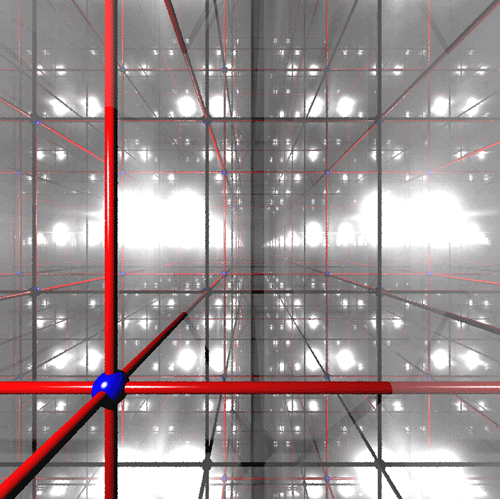 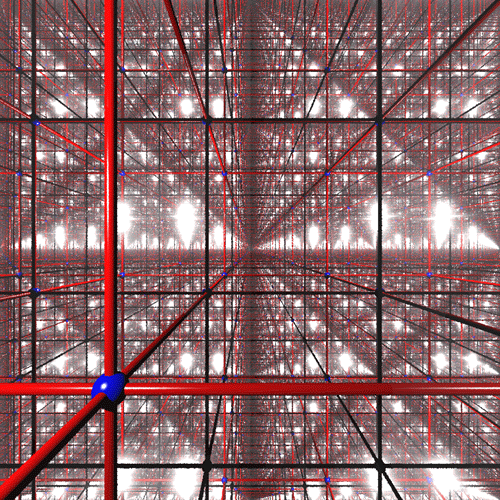
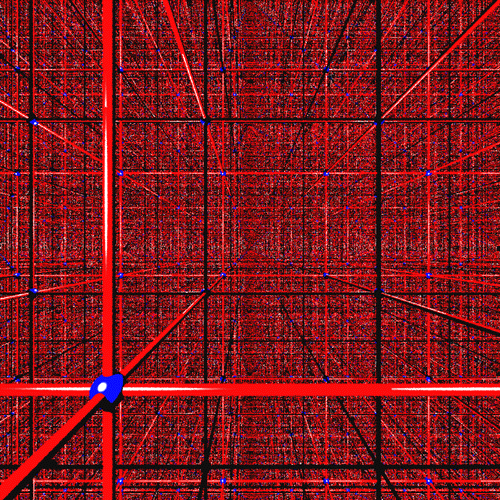
|









